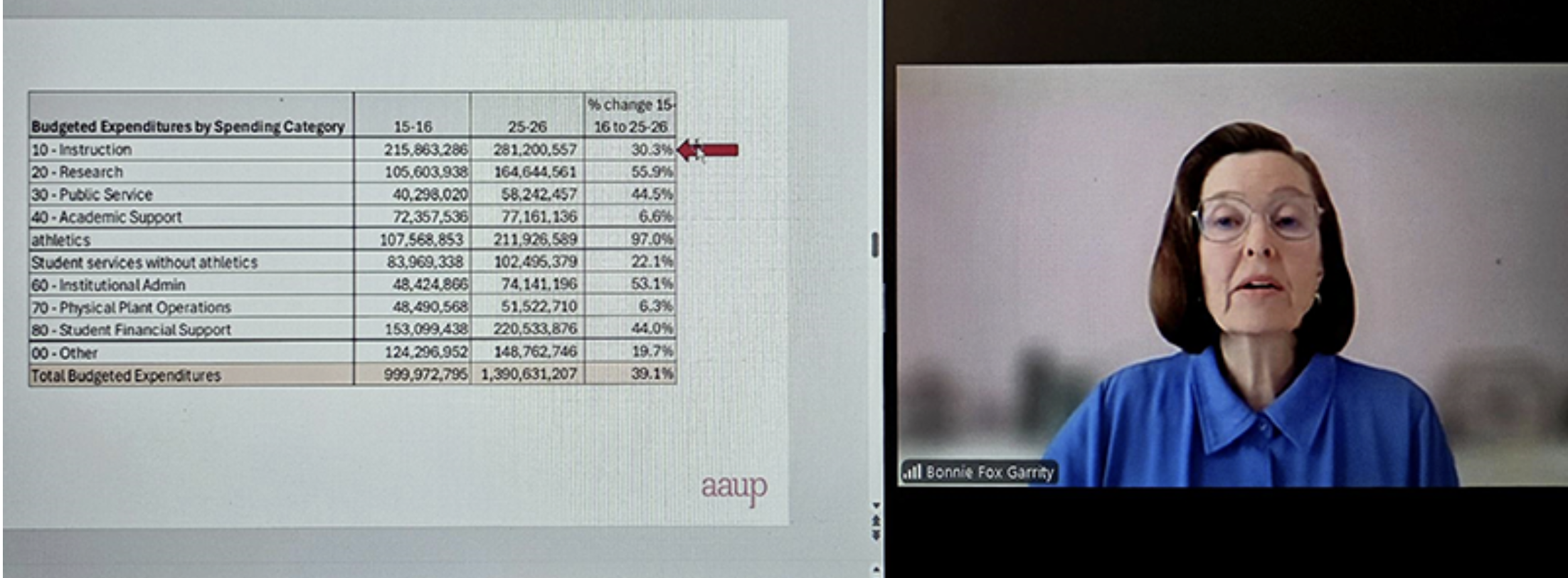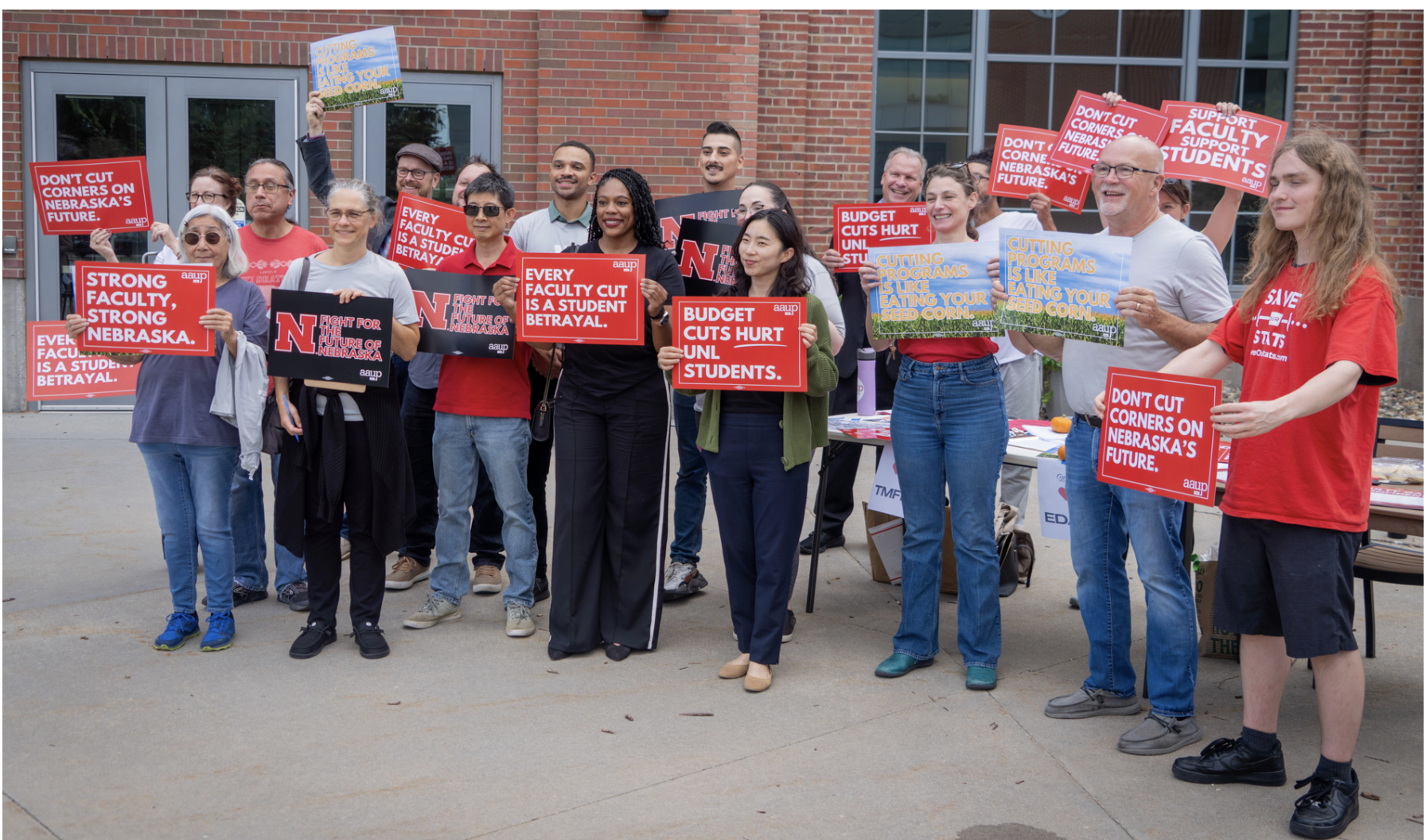
NU spokesperson says report raises important questions but ‘does not adequately reflect the complexity of university finances’
By:Zach Wendling
Nebraska Examiner
LINCOLN — A new external analysis indicates the University of Nebraska-Lincoln and the NU system are “financially healthy,” leaving some UNL faculty “scratching our heads” as to why administrators are again seeking to trim 1.8% from the budget.
UNL Chancellor Rodney Bennett proposed the $27.5 million in budget cuts in mid-September. The total includes $21 million to eliminate a structural budget deficit that Bennett said had “compounded over time,” plus $6.5 million to “help safeguard against repetitive budget reduction cycles.”

Over the past five years, UNL has already weathered more than $75 million in combined cuts.
“We can’t take the budget justification on face value,” said Sarah Zuckerman, president of the UNL’s chapter of the American Association of University Professors, which sought the analysis.
However, an NU spokesperson responding to the financial analysis report said while it raises important questions, “it does not adequately reflect the complexity of university finances.”
Zuckerman is one of many faculty continuing to push back on the necessity of the cuts, questioning the data used to identify a host of programs proposed for elimination or merger. Among the proposed eliminations are six academic areas, including the Department of Educational Administration where Zuckerman is an associate professor.
Every campus in NU’s system is paring back budgets, and regents are set to vote on chancellor recommendations at a Dec. 5 meeting. A UNL committee of faculty, staff and students had until last week to respond to Bennett’s recommendations and offer alternatives.
UNL has declined to release the committee report before Bennett finalizes his proposal, expected by early next month.
Instruction 20.2% expenses, 69% cuts
On Wednesday, Bonnie Fox Garrity, a financial analyst for the national AAUP and a business professor at D’Youville University in Buffalo, New York, shared her October analysis of UNL and the NU system requested by Zuckerman’s AAUP chapter. She’s done similar reports for other campuses, too.
Among Garrity’s findings are that of UNL’s proposed $27.5 million in cuts, trims to “instruction” account for 69% of the proposed reductions, yet the area is 20.2% of UNL’s total expenses.
The report found that there are fewer instructional employees at UNL since 2019, a decrease of 7.8% to mid-2024, and these employees’ salaries had risen by 4.5%. The increases were not adjusted for inflation. Meanwhile, the number of non-instructional employees at UNL — which includes top administrators — had grown by 7.6%. Salaries for that group of employees grew by 31.7%.
Over the past decade, Garrity said UNL’s total expenditures grew 39.1%, which accounts for a 97% increase in athletics, which is financially independent. There also was a 53.1% increase in administrative spending and 30.3% increase in instructional spending.
“Our approach is that the financial expenditure should be focused on the core mission of the institution, on the students, on the educational experience,” Garrity said.
Garrity, at a news conference Wednesday announcing the report, said she doesn’t see a “financial crisis” justifying the cuts.
“Even in the announcement of the cuts it was clear that a portion of the cuts were something like a proactive move,” Garrity said. “It is my thought that the cuts could be avoided.”
‘Scratching our heads’
Zuckerman said she came to UNL nine years ago happy to be at a “real university” with resources and support. However, she said “year after year” those resources “disappeared,” with budget reductions in eight of her nine years.
The AAUP asked for a similar financial analysis in 2021, Zuckerman said, which also indicated UNL was in strong financial health. She and other faculty worry UNL’s actions will hurt the trajectory of UNL, diminish its educational offerings and hurt student opportunities.
“That analysis left us scratching our heads as to why there had been so many cuts,” Zuckerman said.
Value of ‘shared governance’
A UNL spokesperson directed the Nebraska Examiner to a spokesperson for the NU system, Cara Pesek, who said NU values the “essential” role of faculty and appreciates the engagement of Zuckerman’s AAUP and others around “shared governance.”
Pesek noted NU and its NU Foundation are financially strong in part because of “careful fiscal stewardship.” There are also many restricted or designated university funds that Pesek said can’t be used for academic salaries or instruction.
In the end, there is another challenge NU has faced for a decade: Lagging state support to the tune of over $200 million that hasn’t kept up with inflation. NU’s main “state-aided budget” consists of tax dollars and tuition. Pesek said this is “creating structural pressures that require careful ongoing management.”
The NU Board of Regents froze tuition rates during the COVID-19 pandemic but increased tuition in each of the past three academic years, including 5% before this fall semester began.
“These campus-led efforts are part of a long-term plan to achieve and maintain fiscal balance, protect the university’s core academic mission and ensure that Nebraska’s only public university remains strong for generations to come,” Pesek said in a statement. “We deeply value the role of shared governance in achieving these goals.”




